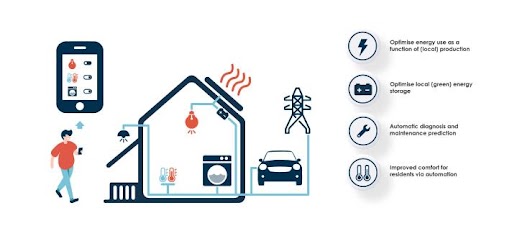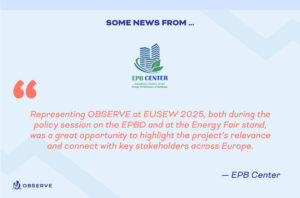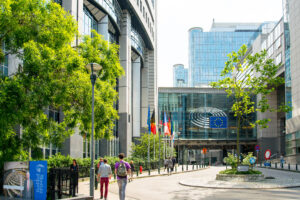Assessing buildings according to a scale of smartness: a new paradigm in the building sector.
Using smart technologies in buildings can be a cost-effective way to assist in creating healthier and more comfortable buildings with lower energy use and carbon emissions. For instance:
- Digital technologies such as smart thermostats and lighting control can pay back within 2 years.
- Smart technologies, such as automated sun shading control or ventilation control based on air-quality sensors, can also improve health, well-being and comfort
- Intelligent scheduling of energy consumption (white goods, electric vehicles, etc.) can result in significant energy savings, and at the same time it contributes to grid balancing.

To promote the use of smart building technologies, the Smart Readiness Indicator (SRI), a common EU framework for rating the smart readiness of buildings, was introduced in the last 2018 revision of the Energy Performance of Buildings Directive (EPBD). The SRI provides a common language for building stakeholders (owners, designers, solution providers, policy actors, etc.) to discuss how to make buildings smarter, and what benefits this will bring.
The rating aims to measure the “smartness” of a building, intended as the ability of a building to sense, interpret, communicate, and respond efficiently to changing conditions.
How to obtain a SRI
For the experts involved in the SRI journey, it has been paramount to be methodologically consistent as well as easily understandable and accessible also for non-expert building users. Hence, the SRI mainly originates from the European standard EN 15232–1 “Energy performance of buildings – Impact of automation and of technical management on the energy consumption of buildings”. Further adaptations and integrations have been made.
To obtain the SRI of a building, 3 are the key functionalities that are considered:
- the operation of technical building systems;
- the external environment (including energy grids);
- the demands from building occupants.
The level of the building capability to optimize energy efficiency and overall in-use performance, the level of building adaptation to the needs of the occupant and to the signals from the energy grid (as energy flexibility) determines the SRI rating.
The 9 technical domains assessed by the rating are: heating; cooling; domestic hot water; ventilation; lighting; dynamic building envelope; electricity; electric vehicle charging; monitoring, and control.
Linked to the key functionalities, there are 7 impact criteria: energy efficiency and maintenance and fault prediction are linked to the first key functionality – how the building optimize energy efficiency and in-use performance; comfort, convenience, health well-being and accessibility, information to occupants are connected to the second key functionality – how the building adapts its operation to the needs of the occupants; last, the energy flexibility and storage criteria are linked to the key functionality – how the building adapt to the signals from the grid – energy flexibility.
How does it work? An assessor rates each building according to the 9 domains and the 7 impact criteria. The sum of domain and impact scores provides the total SRI rating.
More information can be found on the EU online forum that supports and monitors the implementation of the SRI in Europe: navigate through the SRI hub and read the factsheet on the SRI.
Listen to Prof. Paris Fokaides in his Expert Talk organized by EU BUILD.





